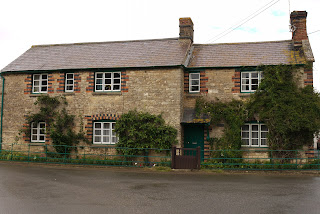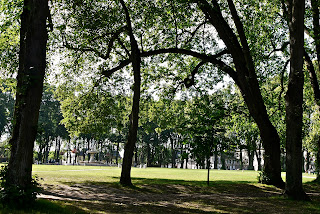Church Street, Titchfield
We met up with our friends Viv and Giles for another in our series of walks in mid-way locations. Unusually we started with lunch, at the very good Titchfield Mill pub, and then walked through the delightful village of Titchfield. In the middle ages it was a small port at the head of the Meon estuary. It also had an abbey (the ruins of which still remain). The estuary was drained in the 17th century and a canal was dug, but although there are a number of substantial Georgian houses, Titchfield's importance as a port declined in favour of Fareham.
We entered the village via Mill Lane and soon reached the High St, with the Queen's Head pub. We were impressed with its sign depicting Catherine of Braganza, although we had declined the possibility of eating there.
We were confident that she was the wife of Charles II, but less sure of the location of Braganza. It turns out to be north east Portugal and in Portugese is known as Braganca (c cedilla).
At the end of the High St we detoured down Church St (see photo above) for a look at St Peter's church. The lower part of the tower is Anglo-Saxon (9th or maybe even 8th century according to Pevsner) and was originally the porch of a church with a single nave.
There were significant additions in the 12th to 15th centuries and major changes in the 19th century. It looks rather chaotic from the outside, but pleasantly spacious within.
We continued along South St, past a nice group of half-timbered houses ...
... into Coach Hill and towards the sea along a lane and a series of field paths. We noted a large variety of crops, but largely failed to identify them. Somewhere along the way we were joined by a black and white Jack Russell. Once it was clear that he was here to stay, he was christened Kevin.
Eventually we emerged on the shingle beach, under heavy cloud. The towers of the Exxon refinery to the west suggested some mythical city.
We headed east towards the chalets which mark the mouth of the river Meon, deciding to walk along the top of the cliff rather than struggle through the shingle.
Turner or maybe Whistler might have made a fine tonal work from the intricate shades of beach, sea and sky, with the Isle of Wight on the horizon.
At the chalets (rather ramshackle we thought) we headed inland initially up the road and then along a track with the canal on our left and the river over to the right beyond the reeds of a mature reserve. Before we left the road, our faithful companion Kevin left us. There was some concern for his safety, but the general conclusion was that he probably knew his way around the area better than we did.
The canal was stagnant in places, but after a while it seemed to be refreshed by an inflow from the river and was very pleasant to walk beside.
From: Pocket pub walks in Hampshire by Nigel Vile (Countryside Books).
Map: Explorer 119 (Meon Valley).
Conditions: cloudy, but mercifully the threatened rain did not materialise. Quite warm. Too windy for any flower pictures.
Distance: about 6 miles.
Rating: three and half stars. Interesting and varied.























































